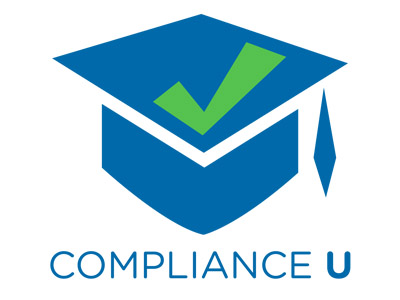 |
Sales Management: Forecasting Sales Revenue |
0.50 |
This course will focus on identifying sales forecast factors and types of sales forecasts as well as discussing various types of forecasting approaches. |
 |
Sales Management: Effective Sales Teams |
1.50 |
This course will focus on identifying the skills and daily tasks of a sales manager, interviewing sales professionals, identifying relationship-building processes, and identifying trust-building processes. |
 |
Sales Management: Managing Sales Territories |
0.50 |
This course will focus on identifying the steps for choosing the best territory strategy and identifying the factors to consider when conducting territory reviews. |
 |
Sales Management: Motivating Sales Teams |
1.00 |
This course will focus on motivating sales professionals, monitoring and increasing motivation levels, and addressing substandard sales performance. |
 |
Effective Presentations: Fundamentals of Persuasion |
1.00 |
This course will focus on persuasion and the goals of persuasion. You will also learn how to organize a persuasive presentation and use the methods of persuasion. |
 |
Sales Management: Effective Sales Performance |
1.50 |
This course will focus on training sales professionals, setting performance standards, evaluating performance, and conducting a sales meeting. |
 |
Sales Skills: Advanced: Studying the Market |
0.75 |
This course will focus on using sales strategies, analyzing markets and competitors, and researching clients. |
 |
Virtual Teams: Fundamentals of Virtual Teams |
0.50 |
This course will focuse on how to identify the purpose and types of virtual teams, identify the benefits of serving in virtual teams and types of work and meetings carried out by virtual teams, and identify the schedule of a session, and the agenda of a session. |
 |
Understanding the Basic Concepts of HIPAA |
0.75 |
This course will give participants a basic understanding of the Health Insurance Portability and Accountability Act (HIPAA). Participants will learn what HIPAA is, how it changes the way we do our work, federal vs. state standards, patient rights, the purposes of HIPAA compliance and more. |
 |
Customer Service Skills |
1.00 |
This course will help you develop customer service skills by teaching you how to develop and maintain a positive attitude. You will learn how to use motivation to improve customer service skills, and will go through the seven steps in the customer service process. Finally, you will discover how to react to customers’ problems and learn from them. |
 |
Project Management - Basic: Characteristics of a Project |
2.25 |
This course will help you identify characteristics of a project’s internal and external environments, the influence stakeholders have on a project, and different organizational structures. You will also learn how to identify the critical functions, necessary skills, responsibilities, and challenges of a project manager. This course will also cover how to staff a project team, create a skills inventory, and identify the benefits of team building and of establishing a project office. |
 |
Project Management - Basic: Fundamentals of Project Management |
0.50 |
This course will help you identify the features and characteristics of a project, and identify the difference between product management and project management. You will also learn how to identify the steps and variables of the project management process, and identify some common pitfalls to avoid. |
 |
Sexual Harassment Prevention for Employees |
1.00 |
This course will provide you with an overview - defining sexual harassment and general harassment, giving examples of prohibited behaviors, explain the responsibilities of you and your organization and teach you about liability. |
 |
Customer Service: Using What You've Learned |
0.25 |
This course will provide you with the information and—we hope—the inspiration to improve your customer service skills and work toward personal success. The final two steps are up to you: You must implement what you have learned, and continue to work on improving your skills. |
 |
Customer Management |
1.00 |
This course will teach you about handling dissatisfied customers. You will learn how to maintain composure and be professional through both verbal and nonverbal communication. You’ll learn the difference between upset and angry customers and how to handle each. With angry customers, you will learn how to listen, remain calm, avoid negative filters, and express empathy. Then, with upset customers, you’ll be taught methods for making your service to them more effective. Finally, you will learn how to manage, recognize, and reduce your own stress to better serve your customers. |
 |
Project Management - Basic: Time Management |
1.25 |
This course will teach you how to identify the components of time management, identify the purpose of activity definition and sequencing, and recognize different diagramming techniques. You will also learn how to identify the factors that affect activity duration, and identify techniques for estimating activity duration. |
 |
Customer Service: Listening and Questioning |
0.75 |
This topic will discuss the various types of listening: passive, selective, and active. You will learn that paraphrasing or summarizing what the customer says is a good way to confirm what you hear. In this course, you will also learn about questioning and the types of questions that are used to elicit the information you want from customers. There are four types of questions: open-ended, closed, alternative-choice, and clarifying. This course will also discuss the examination process that can be used to understand the customer’s problem and prescribe a realistic solution. |
 |
Advanced Interpersonal Communication: Communication Styles and Methods |
0.75 |
To be successful in the workplace, you must be able to effectively communicate and cooperate with clients and co-workers. Learning about the four types of communication styles helps a listener understand a speaker’s perspective. It also helps a speaker understand how their communication affects the listener.
In this course you will learn: to identify primary and secondary communication styles, and to communicate using various verbal and nonverbal modes of communication. |
 |
Conducting Meetings: Listening Effectively and Asking Questions |
0.50 |
To communicate effectively during a meeting, you have to listen and ask appropriate questions. Listening and questioning are two interdependent skills that will help you create a positive climate, develop positive dialog, and achieve the group’s goals.
By listening and questioning effectively, you’ll actively engage yourself and others in the meeting. Actively participating will enable you to quickly identify and address other participants’ thoughts, ideas, and concerns. Facilitating communication in this manner will foster individual and group success.
In this course you will learn to: identify the main causes of conflict, the ways to resolve conflict in meetings, and the common difficult personality types in meetings, and identify the characteristics of a positive and negative climate, and the steps to build a positive climate when communicating. |
 |
Quality Management: Implementing Quality Changes |
0.67 |
Understanding a process is the only way a process improvement team can effectively improve the process. The team must understand how the process currently functions before they can identify problems. In addition, in order to understand how potential changes will affect the process, the team needs to understand specific elements of the process, as well as the process as a whole.
In this course you will learn to: identify the elements of a process, as well as techniques used to streamline a process, and measure various aspects of a process. |
 |
Employee Performance: Resolving Conflicts |
1.50 |
Understanding the different styles of conflict resolution can help you identify the most appropriate process to use when addressing conflicts in the workplace. There are two general types of conflict resolution: indirect and direct.
In this course you will learn to: identify conflict resolution styles, resolve conflicts in the workplace, resolve team conflicts, and identify the communication skills required to resolve conflicts. |
 |
Combating Sexual Harassment in the Workplace |
1.00 |
Welcome to Combating Sexual Harassment in the Workplace. This course was created by CypherWorx in alignment with training materials developed by New York State. While nearly a dozen states have enacted sexual harassment legislation, New York is among those with the strongest and most stringent proposed sexual harassment laws in the nation. (complianceweek.com). This course may be used as a general sexual harassment training, however, you should check with your state and local municipality for other important requirements. |
 |
Cross-Cultural Business Communication: Communicating Across Cultures |
1.00 |
When communicating across cultures, you could come across a number of barriers. In addition to language barriers, there might be more subtle obstacles, such as cultural biases and conflicting communication styles. Building relationships with people of other cultures will provide you with the incentive to work through those barriers and achieve effective communication.
In this course you will learn to: establish rapport and build trust, and listen well and provide positive and constructive feedback. |
 |
Cross-Cultural Business Communication: Addressing Cross-Cultural Issues |
1.00 |
When communicating with coworkers, it is very important to respect other cultures. You should refrain from using humor that might offend people from other cultures, and avoid stereotypes that might affect how you treat your coworkers.
Before communicating with employees who belong to a different culture, it is important to research their cultures and understand clearly what is expected from your communication. You should determine what types of communication are most appropriate in specific situations. For example, you should investigate the most appropriate method for communicating a behavioral problem to an employee. Some cultures prefer profuse praise to cushion the constructive feedback, while others prefer a more direct approach. The most important thing to communicate to employees of different cultures is respect. By approaching them in accordance with their cultural standards and expectations, you’ll show respect for their cultures and your communication will be enhanced.
In this course you will learn to: identify gestures used in different cultures and build a cross-cultural team, and discuss guidelines for writing cross-cultural documents and assembling a translation team. |
 |
Cross-Cultural Business Communication: Differences In Communication |
1.00 |
When communicating with people of another culture, it is important to be aware of the person’s level of active participation in a conversation. In some cultures, highly active participation is the norm, while other cultures dictate a more passive involvement.
The exchange between people engaged in communication demonstrates conversational involvement. In any culture, a message must have both a sender and a receiver. In cultures with high conversational involvement, the receiver would send verbal and nonverbal cues, such as eye contact, nodding, and interjections, such as "I’m listening" or "Tell me more." In cultures with low conversational involvement, receivers would adopt a passive posture, perhaps staring at the ground with hunched shoulders, and would simply absorb the message without offering cues on whether they are listening or not.
In this course you will learn to: identify the differences in verbal communication across cultures, and improve your nonverbal communication skills by understanding the differences in gestures and expressions that vary across cultures. |


























